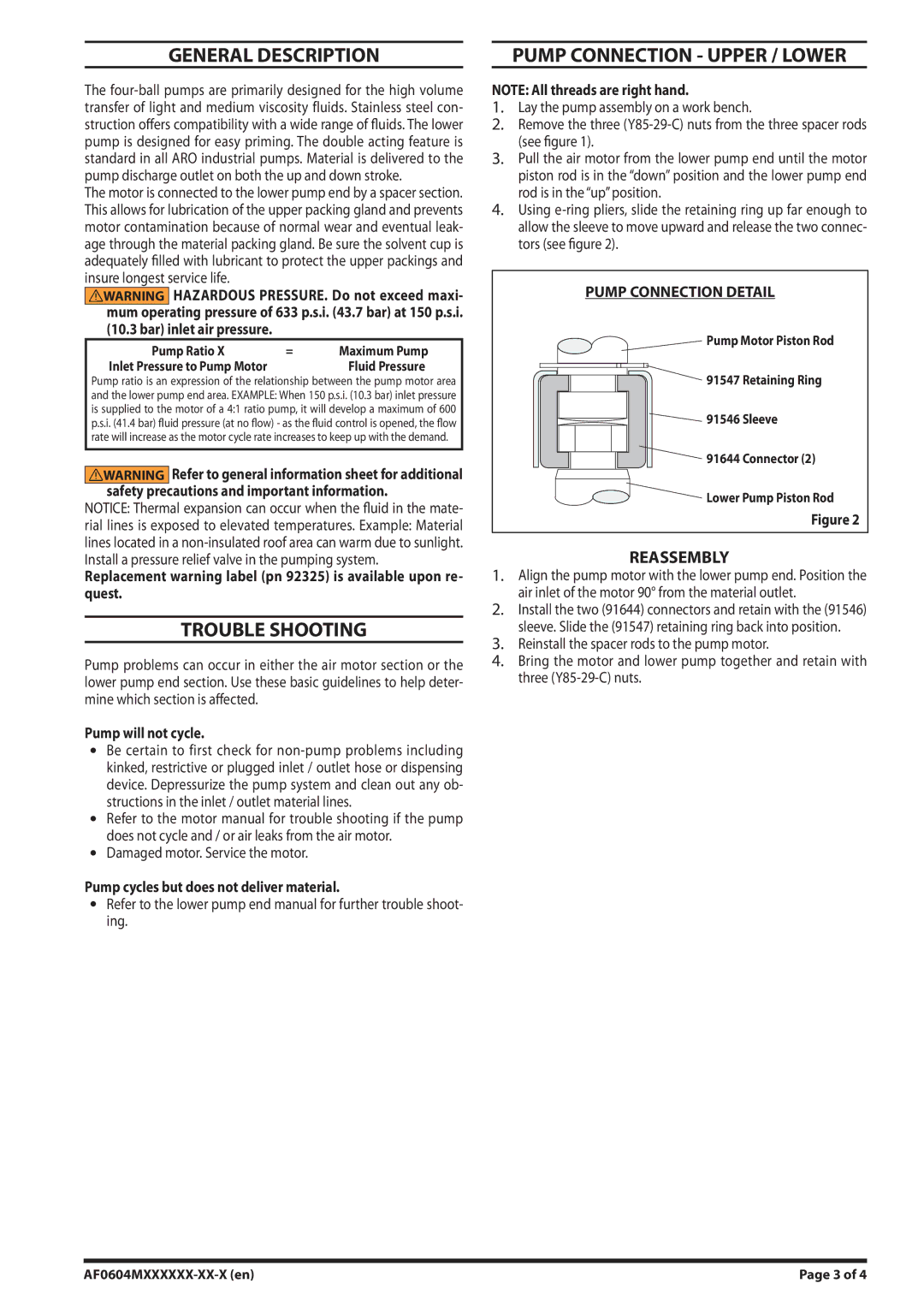
GENERAL DESCRIPTION
The
The motor is connected to the lower pump end by a spacer section. This allows for lubrication of the upper packing gland and prevents motor contamination because of normal wear and eventual leak- age through the material packing gland. Be sure the solvent cup is adequately filled with lubricant to protect the upper packings and insure longest service life.
WARNING HAZARDOUS PRESSURE. Do not exceed maxi- mum operating pressure of 633 p.s.i. (43.7 bar) at 150 p.s.i. (10.3 bar) inlet air pressure.
Pump Ratio X | = | Maximum Pump |
Inlet Pressure to Pump Motor |
| Fluid Pressure |
Pump ratio is an expression of the relationship between the pump motor area and the lower pump end area. EXAMPLE: When 150 p.s.i. (10.3 bar) inlet pressure is supplied to the motor of a 4:1 ratio pump, it will develop a maximum of 600 p.s.i. (41.4 bar) fluid pressure (at no flow) - as the fluid control is opened, the flow rate will increase as the motor cycle rate increases to keep up with the demand.
WARNING Refer to general information sheet for additional safety precautions and important information.
NOTICE: Thermal expansion can occur when the fluid in the mate-
rial lines is exposed to elevated temperatures. Example: Material lines located in a
Replacement warning label (pn 92325) is available upon re- quest.
TROUBLE SHOOTING
Pump problems can occur in either the air motor section or the lower pump end section. Use these basic guidelines to help deter- mine which section is affected.
Pump will not cycle.
Be certain to first check for
Refer to the motor manual for trouble shooting if the pump does not cycle and / or air leaks from the air motor.
Damaged motor. Service the motor.
Pump cycles but does not deliver material.
Refer to the lower pump end manual for further trouble shoot- ing.
PUMP CONNECTION - UPPER / LOWER
NOTE: All threads are right hand.
1.Lay the pump assembly on a work bench.
2.Remove the three
3.Pull the air motor from the lower pump end until the motor piston rod is in the “down” position and the lower pump end rod is in the “up” position.
4.Using
PUMP CONNECTION DETAIL
Pump Motor Piston Rod
91547 Retaining Ring
91546 Sleeve
91644 Connector (2)
Lower Pump Piston Rod
Figure 2
REASSEMBLY
1.Align the pump motor with the lower pump end. Position the air inlet of the motor 90° from the material outlet.
2.Install the two (91644) connectors and retain with the (91546) sleeve. Slide the (91547) retaining ring back into position.
3.Reinstall the spacer rods to the pump motor.
4.Bring the motor and lower pump together and retain with three
Page of 4 |
